
I submit to you, that we have allowed witches, wizards and magi to become the teachers, preachers and priests over us. This is totally against GOD and against our humanity.


SMOKE AND MIRRORS
This manner of speech refers to the performances of stage conjurers who use actual smoke and mirrors to mesmerize their audiences.
mesmerize – mez-muh-rahyz, verb (used with object), mes·mer·ized, mes·mer·iz·ing.
Magicians still use these techniques but have widened the category to more than just actual smoke and mirrors to mask what is real by using numerous techniques.
The figurative use of “smoke and mirrors” that is now more common refers to the obscuring or embellishing of the truth.
This very prevalent in politics in any country since its origin.
The news cycles are full of spin doctors, taking ridiculous extremes and putting their agenda in a logical perspective to sway people (into believing) what they are speaking as truth. The(ir) smoke and mirrors would be the language and images they use to frame their position.
“All political power is primarily an illusion… Mirrors and blue smoke, beautiful blue smoke rolling over the surface of highly polished mirrors.”
“The ability to create the illusion of power, to use mirrors and blue smoke, is one found in unusual people.”
Many use “smoke and mirrors” for theft and destruction but magicians continue to use concealed techniques to demonstrate moments that captivate imaginations.
Check out the “smoke and mirrors” @TheatreMagic.
SMOKE & MIRRORS: THE ROLE OF MISDIRECTION IN MAGIC
The key to the magician’s act is misdirection. When your attention isn’t focused on something, you don’t notice it. It’s not necessarily that you don’t see it. Your eyes still receive all the visual input, but your brain hones in only on certain parts of your environment, what seems important, filtering out (what you are decieved into believing is) unnecessary input so that you’re not overloaded with too much information.
This phenomenon is called inattentional blindness.
Normally, inattentional blindness helps you retain your concentration and focus on the things that (seem to) matter. In a magic act, however, the magician misdirects you, leading your focus away from what’s happening right before your eyes.
spacer
2-Piece Smoked Drop-in Camera Dome for use with Drop Ceiling
- 1/8 ” or 1/4″ Mirror-Grade Acrylic coated with a 2-way Mirror Finish.
- Looks like a Mirror from the lighted side and a Window from the side with little or no light.
- Surveillance for a Show Room or Store from an Office.
- Hide a Camera to Monitor Store Activity.
- Used in Many Non-Security Related Crafts (see more uses below).
- Available in several Standard Sizes: Please use the drop-down boxes below to see the available sizes and pricing.
- Less expensive 1/8: thick for up to 24″ x 48″ areas and 1/4″ for larger sizes windows. Note: Because acrylic is flexible, we recommend the 1/4″ for larger mirror sizes.

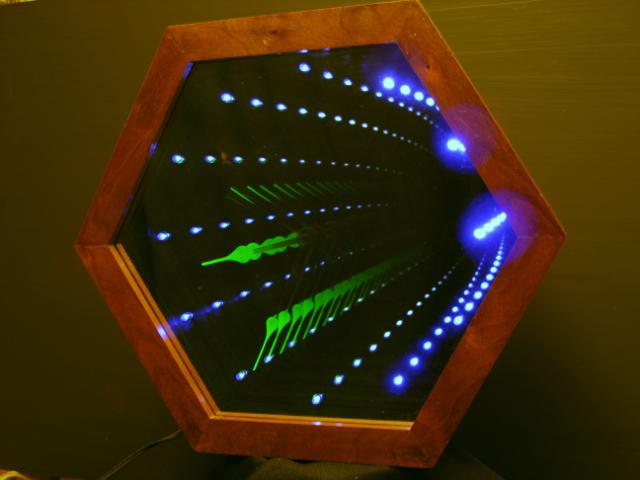 |
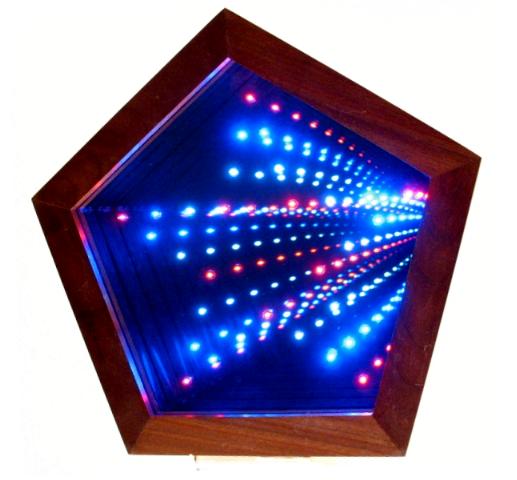 |
Investigating Optimizing Mirror Orbits for Dark-side Illumination (To read the full document click above)
Abstract
When a planet is tidally locked with its star, the same side always faces the star; thus one side is always dark. This synchronization occurs quickly for potentially habitable Earth-like planets orbiting dim, low-mass stars. Korpela, Sallmen, & Leystra Greene (2015; KSG) suggest that advanced extraterrestrial civilizations may put large-scale mirror fleets in orbit around such exoplanets to reflect starlight to the dark side of the planet. They might also use such mirrors to alter the climate of their own or another planet. Radiation pressure (RP) will be important for such large, lightweight mirrors, but research on satellite orbit stability typically neglects its effects. The long-term goal of this research is to determine fuel-efficient satellite orbits in situations where RP is important. We use Python and REBOUND to simulate mirrors orbiting an Earth-like exoplanet in the habitable zone for a variety of stars. Our simulations use two settings: “Always RP†always reflects starlight towards the planet’s center while “Nighttime RP†only does so on its dark side. We found mirrors survive longer when initially orbiting face on to the star compared to edge on. We present a selection of results illustrating how RP affects the mirror’s survival time.
spacer
Chinese magic mirror From Wikipedia, the free encyclopedia
The Chinese magic mirror (simplified Chinese: 透光镜; traditional Chinese: 透光鏡; pinyin: tòu guāng jìng) is an ancient art that can be traced back to the Chinese Han dynasty (206 BC – 24 AD).[1] The mirrors were made out of solid bronze. The front is a shiny polished surface and could be used as a mirror, while the back has a design cast in the bronze.[2] When bright sunlight or other bright light reflects onto the mirror, the mirror seems to become transparent. If that light is reflected from the mirror towards a wall, the pattern on the back of the mirror is then projected onto the wall.[2]
In about 800 AD, during the Tang dynasty (618–907), a book entitled Record of Ancient Mirrors described the method of crafting solid bronze mirrors with decorations, written characters, or patterns on the reverse side that could cast these in a reflection on a nearby surface as light struck the front, polished side of the mirror; due to this seemingly transparent effect, they were called “light-penetration mirrors” by the Chinese.[2][3]
Robert Temple describes their construction: “The basic mirror shape, with the design on the back, was cast flat, and the convexity of the surface produced afterwards by elaborate scraping and scratching. The surface was then polished to become shiny. The stresses set up by these processes caused the thinner parts of the surface to bulge outwards and become more convex than the thicker portions. Finally, a mercury amalgam was laid over the surface; this created further stresses and preferential buckling. The result was that imperfections of the mirror surface matched the patterns on the back, although they were too minute to be seen by the eye. But when the mirror reflected bright sunlight against a wall, with the resultant magnification of the whole image, the effect was to reproduce the patterns as if they were passing through the solid bronze by way of light beams.“[2][3]
Michael Berry has written a paper describing the optics and giving some photos.[4]
The ancient craftsmanship of Chinese magic mirrors dates back to 2900 – 2000 BC. in China, Egypt and the Indus Valley. These bronze mirrors became popular and were produced in large quantities during the Han dynasty between the period of 206 BC. and 24 AD. mainly in China. According to UNESCO,[5] around 800 AD, during the Tang Dynasty (618-907), the book Register of Ancient Mirrors described how to make those mirrors which the Chinese called “translucent mirrors“. Although it eventually got lost, Shen Kuo (1031-1095), who owned three mirrors as a family relic, described them in his Essay on the Treasure of Dreams. Surprised by the ability of a solid metal to behave as if it were transparent, Shen assumed that in its creation some tempering technique was performed to produce surface wrinkles imperceptible to the human eye. Although he was wrong about cooling rates, he was right about the cause that left 19th century Western scientists unanswered. And it was not until 1932 that William Bragg discovered that Shen was right about imperceptible surface wrinkles.
Yata no Kagami (八咫鏡) is a sacred mirror that is part of the Imperial Regalia of Japan. It is said to be housed in Ise Grand Shrine in Mie Prefecture, Japan, although a lack of public access makes this difficult to verify. The Yata no Kagami represents “wisdom” or “honesty,” depending on the source. Its name literally means “The Eight Ta Mirror,” a reference to its size and octagonal shape. Mirrors in ancient Japan represented truth because they merely reflected what was shown, and were a source of much mystique and reverence (being uncommon items). Japanese folklore is rich in stories of life before mirrors were commonplace.
In Shinto, the mirror was forged by the deity Ishikoridome; both it and the Yasakani no magatama were hung from a tree to lure out Amaterasu from a cave. They were given to Amaterasu‘s grandson, Ninigi-no-Mikoto, when he went to pacify Japan along with the sword Kusanagi. From there, the treasures passed into the hands of the Imperial House of Japan.
In the year 1040 (Chōkyū 1, 9th month), the compartment which contained the Sacred Mirror was burned in a fire.[1] Whether that mirror was irrevocably lost or not, it is said to be housed today in Ise Grand Shrine, while a replica is enshrined in Three Palace Sanctuaries of the Imperial Palace in Tokyo.
Today, Yamamoto Akihisa is said to be the last manufacturer of magic mirrors in Japan. The Kyoto Journal [6] interviewed the craftsman and he explained a small portion of the technique, that he learned from his father.[6]
Western Europe
For many centuries, the “magic” of these mirrors baffled both lay people and scientists, who devoted themselves to do different research work on this subject.
The first magic mirror to appear in Western Europe was owned by the director of the Paris Observatory, who, on his return from China, brought several mirrors and one of them was magical. The latter was presented as an irresistible unknown object to the French Academy of Sciences in 1844. No one had seen anything like it, and no matter how much they studied its behavior, they could never fully understand it. In total, there were only four magic mirrors brought from China to Europe; but in 1878, two engineering professors presented to the Royal Society of London several models they had brought from Japan. The English called the artefacts “open mirrors” and for the first time made technical observations regarding their construction. The mirrors effects were so wonderful that the Royal Society was mesmerized by them. No one, however, could figure out what produced the spooky and beautiful projection of light which they categorized as an “impossible optical illusion” and therefore “magical”.
Later, in November 2005, the physicist Michael Berry, made a project on this topic and published an article describing the optics.[7]
The invention of spectacles
How and where glasses may have begun.
Several names and places are associated with the supposed ‘invention’ of spectacles though the truth is they were probably invented anonymously and developed over a period of time. In the Viking Age ‘lenses’ were ground out of rock crystal in Sweden.
If the archaeological evidence were given priority our attention would towards the Germanic countries…
Roger Bacon
One of the first figures to be associated with the invention of spectacles was the thirteenth century English friar Roger Bacon, who was based in Paris and outlined the scientific principles behind the use of corrective lenses in his Opus Majus (c.1266), of which the College possesses an early printed edition prepared from Bacon’s manuscripts in 1733.
The idea that monks or friars possessed a secret knowledge of spectacles (not surprising as most of the monasteries were created by Druids/Magi professing to be converted to Christianity.) that they later unleashed on the world found currency with several writers, notably William Molyneux in his Dioptrica Nova (1692). Unfortunately no evidence survives to suggest that Bacon ever applied his theoretical knowledge of ‘perspectiva’ (optics) despite the fact that, as a Franciscan, he was part of a practically-minded religious order. A recent biographer of Bacon, Brian Clegg, insists that for Bacon the fledgling notion of ‘science’ was entirely concerned with the accumulation of practical knowledge with a specific end in mind. This is evident in his less well-known work of the 1260s or 1270s on burning glasses, De speculis comburentibus. The Opus Majus is, of course, only a summary proposal addressed to Pope Clement IV for a still larger work that Bacon was fated never to complete. Had the main work ever materialised the corpus of original practical experimentation that scholars now agree underpinned the summary might well have resulted in some form of binocular mounted lens. Perhaps the man himself had produced one already, or it may have been amongst the thousands of pounds worth of equipment that Bacon was in the privileged position to purchase in furtherance of his studies? It is dangerous to assume, however, that the ‘inventor’ of spectacles had any theoretical knowledge of physical optics at all.
Early references to spectacles are notoriously suspect. Sometimes they have only been recorded years after the events described. Other references have been interpreted as meaning what we understand as spectacles, but those interpretations could be mistaken.
In 1282 a priest named Nicholas Bullet is alleged to have used spectacles whilst signing an agreement.
By 1284 De Cristalleris, a chapter of the by-laws of the Venetian guilds prohibits the use of ordinary white glass instead of crystal, in order to keep standards high. Further Venetian State decrees of 1300 and 1301 refer to roidi da ogli as well as reading lenses (Latin: vitreos ab oculis ad legendum). Whilst this may not mean spectacles as we would understand them, the improvements in lens-making technology in the area of Venice was certainly crucial to their development.
Fra Giordano’s Sermon
The pictures show the front of the church of Santa Maria Novella in Florence and the present pulpit. In this church Giordano da Rivalto, a Dominican friar from Pisa, renowned for his popular preaching, delivered a Lent sermon on 23 February 1305, the wording of which deserves close scrutiny. Celebrating the ingenuity of mankind, he stated (in translation): ‘It is not yet twenty years since there was found the art of making spectacles’ (Italian: occhiali) This could mean that spectacles were known to him to have been around since 1285 (or maybe 1286, or indeed an even later date, if the twenty-year mark had not yet been reached). He referred to a ‘new art’ and it is now generally accepted that the Friar’s next words can be translated ‘I have seen the man who first invented and created it and I have talked to him’. It seems unlikely, however, that there was ever one Damascus moment when the art of making spectacles was suddenly ‘found’; the remark could refer to the development of one particularly successful method of manufacturing a device that was still in its infancy and may have been calculated to flatter a patron. It is also unclear to what extent Giordano would have been aware of developments outside of the Florentine sphere of influence.
Fra Rivalto Pulpit Santa Maria
Around the turn of the 13th and14th centuries convex ‘lenses’ of a form which could have been of benefit to presbyopic patients were being produced on the glass-manufacturing island of Murano in the Venetian lagoon. Whether this was, in fact, their purpose is another matter.
Alessandro Della Spina
Over three centuries ago, probably in 1673, it was first reported by the Florentine scholar Carlo Roberto Dati in an essay on The Invention of Eyeglasses that a document existed in the Dominican convent of St Catherine in Pisa. This Chronicle told how a friar who had died in 1313 had learned how spectacles (Latin: ocularia) were made from somebody else who was ‘the first to invent them’ and subsequently been able to make them himself, though only it seems for his personal use, and consequently he had shared the invention with the wider world out of a sense of charity lacking in the original craftsman whose handiwork he had witnessed. This document has now been rediscovered by modern historians. It is important because it implies that della Spina was a conduit by whom the method was spread but that the original ‘inventor’ had endeavoured to keep the process a secret.
It is impossible to know if Friar Giordano and Friar Allessandro either met or were talking about the same man and whether they did so in Pisa or Florence. It would be wrong for us, unquestioningly, to follow Dati’s seeming assumption that the ‘inventor’ was ‘probably’ a Pisan. This evidence supports the idea of a late 13th century North Italian development but the native origin of the ‘inventor’ and his basis for claiming the title are lost to history.
From 1316 an Italian manuscript survives in which the price of a pair of spectacles in a case is given as six Bolognese solidi.
In 1329 a Tuscan merchant filed a complaint that spectacles he had bought in Florence had been stolen from him.
Circa 1330, the Lueneburg Casket in Wienhausen was constructed with four decorative convex glass disks, now bearing painted evangelist symbols but which appear to have originated as ground spectacle lenses with a refractive power of 3.5 dioptres. If so, these would be the earliest surviving glass spectacle lenses.
The Treviso Frescoes
The earliest depiction of spectacles in a painted work of art occurs in series of frescoes dated 1352 by Tommaso da Modena in the Chapter House of the Seminario attached to the Basilica San Nicolo in Treviso, north of Venice.
The first depiction of spectacles in art: a portrait of Cardinal Hugo …
The first depiction of spectacles in art: a portrait of Cardinal Hugo of Provence at his writing desk, painted by Tommaso de Mondena in fresco in the Basilica San Nicolo in Treviso, Italy. (View Larger
Artist’s view of Archimedes of Syracuse (Sicily) operating his burning mirrors against Roman triremes during the siege of his city laid by consul Marcus Claudius Marcellus, at the time of the Second Punic War (214-2 BCE).
“these works of art occur in a series of frescoes dated 1352 by Tommaso da Modena in the Chapter House of the Seminario attached to the Basilica San Nicolo
in Treviso, north of Venice. Cardinal Hugo of Provence [Hugh de St. Cher] is shown at his writing desk wearing a pair of rivet spectacles that appear to stay in place on the nose without additional support. The Cardinal actually died in the 1260s and could never have worn spectacles! Across the room Cardinal Nicholas of Rouen is depicted using a monocular lens in the style of later quizzing glasses. The artist has even tried to represent the physical effort of straining to see the book through the lens. The men depicted in this series of paintings are Dominicans (like Fra Rivalto), members of a dynamic monastic order founded in 1217 and regarded as ‘the carrier of the sciences’. It is notable that visual aids are portrayed as devices for the use of literate men as well as aesthetes – they had, after all, commissioned this important work of early Renaissance art” (London College of Optometrists web page on the Invention of Spectacles
, accessed 06-22-2009).
Cardinal Nicholas of Rouen/TOMMASO DA MODENA (b. ca. 1325, Modena, d. 1379, Modena)
Across the room Cardinal Nicholas of Rouen is depicted using a monocular lens in the style of later quizzing glasses. The artist has even tried to represent the physical effort of straining to see the book through the lens.
The men depicted in this series of paintings are Dominicans (like Fra Rivalto), members of a dynamic monastic order founded in 1217 and regarded as ‘the carrier of the sciences’.
It is notable that visual aids are portrayed as devices for the use of literate men as well as aesthetes – they had, after all, commissioned this important work of early Renaissance art.
A work of fiction from 1358, by Franco Saccheti (1330-1400), has a Florentine prior saying ‘I don’t see well without my spectacles’ (Italian: occhiali).
In summary the invention of spectacles is shrouded in mystery. The intellectual understanding of optics necessary to inform their invention was certainly in place by the later 1260s but we know, in any case, that they were not the first type of visual aid to be used and they are only a refinement of the single lens device. They were certainly being made and written about in Venice by 1300 at the latest and were being spoken of in Pisa (apparently retrospectively) in 1305. There are various possible conclusions that can be drawn from the available evidence but arguments as to the probable origin of spectacles are largely supposition, instinct or biased opinion.
spacer
![]()
A Venetian Ordinance on the Production of Lenses Suggests that they Were Extensively Used for Reading by This Date
A Venetian ordinance dated Aprl 2, 1300 indicates that lenses were then widely enough used for reading to have legal consequences:
“Venice was a major centre of glass production, and by the end of the thirteenth century eyeglasses had certainly become an object of general use there, as we can tell from an ordinance dated 2 April 1300 aimed at makers of glass and crystal. It prohibited them from perpetrating a fraud that must have become widespread: ‘acquiring or causing to acquired, and selling or causing to be sold, ordinary lenses of colourless glass, under the pretense that they are crystal, for example buttons, handles, discs for kegs and for the eyes (‘roidi de botacelis et da ogli’), tablets for altar pictures and crosses, and magnifying glasses (‘lapides ad legendum’). The penalty was a fine and the smashing of the fraudulent object. The precise distinction made in the document between eyeglasses and magnifying glasses establishes clearly just what each of the named objects is, and since words preserve their own past like fossils preserved in amber, I note that the term Brille, which means eyeglasses in German, is derived from berillium, the medieval latin word for crystal (Frugoni, Inventions of the Middle Ages [2007] 7 and footnote 25).
“In 1301 the Giustizieri Vecchi, the superintendents of Venetian Arts, granted permission to all craftsmen to make “Vitreos to oculis ad legendum“ (glass lenses for reading) as long as they would sell them as glass and not as crystal in order to prevent fraud. When the transparent and colorless glass paste [Pâte de verre] was discovered, lenses became affordable therefore eyeglass trading could go past the borders of the Venetian lagoon for the first time. According to these recorded documents, one can think that in 1300 the art of making eyeglasses was a common practice.
“Then the first eyeglasses were made with round biconvex lenses, to improve farsighted vision. They consisted of two lenses; each assembled with a rim of metal or of wrought leather, riveted together at the end of each handle. They were held before the eyes by hand, in order to aid reading but there was still no way to wear them securely and steadily” (http://www.luxottica.com/en/about-us/museo-dellottica/eyeglasses-timeline,accessed 9-2020).
spacer
EnchantedLearning.com
Zoom Inventors and Inventions
Refracting Telescopes
The first refracting telescope was invented by Hans Lippershey in 1608. Lippershey (1570?-1619) was a German-born Dutch lens maker who demonstrated the first refracting telescope in 1608, made from two lenses; he applied for a patent for this optical refracting telescope (using 2 lenses) in 1608, intending it for use as a military device.
spacer
THIS PROVES 100% THAT SPACE IS SOMETHING THEY MADE UP
TO VIEW THIS VIDEO ON BITCHUTE: CLICK HERE

Scientists Believed in Ether Until Einstein’s Lies about Space Being a Vacuum, Won – Mischa Popoff (bitchute.com)
TO WATCH THIS VIDEO ON BITCHUTE: CLICK HERE


, PHD – Experimental High Energy Physics
The idea of Aether theories is if light is a wave, it needs a medium to travel through, just like sound waves, or water waves, or string vibrations. It is a very sound premise.
Physicists postulated the theory before they know about Maxwell’s equations and how light could be a self propagating change between electric and magnetic fields. However, even today there are still those who believe in an Aether.
In an attempt to proved the existence of Aether, Michelson developed an experiment that at first glance seems very similar to Ligo… The idea was simply if we are moving through an Aether then the relative motion should put light out of phase when it travels across a path 90 degrees different. However, Michelson experiment of 1881 failed to find an Aether and started to spell the end to the theory.
After more careful analysis, it was concluded the 1881 experiment was a null experiment. It would have the same results regardless of relative motion through an Aether, so Michelson-Morley designed a better experiment, Michelson–Morley experiment . This second experiment is credit as disproving the existence of an Aether. In reality it only disproved the existence of one type of Aether, one that follows Newtonian Physics.
Interesting enough, there is actually something very similar to the Aether that has actually been discovered. The Higgs field. Like an Aether it permeates all space. Inlike an Aether it has no effect on the propagation of light. Rather a Higgs field is a Lorentz invariant field, so there is no relative motion. Add it been responsible for the propagation of light, it would not have been detectable by the Michelson-Morley experiment. So we still cannot rule out a Aether, that is Lorentz invariant like the Higgs field, we just have no need of Aether in our models.
Curved space time is again something completely different. Obviously we need space-time to have anything propagate. But a sound wave is vibrations of an air. Light is not vibrations of space time. However, it turns out gravity waves are a vibration of space-time. So in that sense if you want to think of space-time as the Lorentz invarient Aether for gravity waves, the thought is not wrong. However, it isn’t right either. Why isn’t it right? Because as soon as you adopt the model in your mind of it being an Aether you are going to imagine it as something like a surface wave across water, or a pressure wave in the air. The fact gravity waves effect time as well as space will seem counter-intuitive. So while I can’t say it is wrong to think of space-time a gravity wave Aether, I would say it is not helpful either.
To really understand space time you first need to understand special relativity. How, space, time and distance are all relative. They have to be, because an person traveling at 99.9% the speed of light from our perspective will see us moving at 99.9% the speed of light. But both of us will still measure the SAME relative velocity for an actual beam of light.
Once you understand that, the key thing to understand is how a gravitational field and an acceleration field are indistinguishable. If you are a worm in an apple, and an Astronaut in a rocket accelerating at 1g, your experience is exactly the same as the worm in an apple thrown up in the air on Earth. Including the rise, the fall, the bouncing around on the floor, and the eventual coming to rest and feeling a normal force.
But on a spaceship, you are constantly changing between relativist frames. By the time the apple hits the floor, the space ship is going faster than when it was thrown in the air. We learned in special relativity, different velocities mean different rates in the flow of time. It has to be for light to remain at a constant speed. So likewise we would expect the perceptions in time are changed by a gravitational field. Exactly as if one was in a spaceship accelerating faster and faster. Only, this is a local effect. If you are in the space ship and you look out the window, you see everything in the universe moving faster and faster with respect to you. If you are on the Earth and you stare up at the moon, it does not fly away with a 1g acceleration. If this is starting to sound like a calculus problem, you are on the right track. It is like when we compute the area under a curve. For very short distances we can just us a rectangle. But we need to use many different sized rectangles to calculate the area under a curve, because the approximation is only accurate for very narrow rectangles. Likewise, the gravitational and acceleration field equivalence is only accurate for really small regions of space-time.
The rest is mass. You now have a way where mass can curve both space and time. Changing time creates changing space. Changing space creates changing time. You now have a wave of changing time and space, just like a wave of changing electrical and magnetic fields.
spacer
Hans Lippershey: Telescope and Microscope Inventor
Hans Lippershey (also known as Lipperhey), thought to be the inventor of the telescope. Public Domain.
Who was the first person to create a telescope? It’s one of the most indispensable tools in astronomy, so it seems like the person who first came up with the idea would be well known and written up in history. Unfortunately, no one is quite sure who was the first to design and build one, but the most likely suspect was a German optician named Hans Lippershey.
Hans Lippershey was born in 1570 in Wesel, Germany, but little else is known about his early life. He moved to Middleburg (now a Dutch town) and married in 1594. He took up the trade of optician, eventually becoming a master lens grinder. By all accounts, he was a tinkerer who tried various methods of creating lenses for glasses and other uses. In the late 1500s, he began experimenting with lining up lenses to magnify the view of distant objects.
Fast Facts: Hans Lippershey
- Born: 1569/70 in Wesel, Germany Died: September 1619 (aged 48–49)
- Occupation: German, Dutch
- Married: 1594, no information on spouse or children
- Education: Trained as an optician in Middelburg, Dutch Republic, Zeeland (Netherlands)
- Occupation: Spectacle-maker
- Key accomplishments: Invented spyglasses, telescope, and microscope
Lipperhey’s original instrument consisted of either two convex lenses with an inverted image or a convex objective and a concave eyepiece lens so it would have an upright image.[12] This “Dutch perspective glass” (the name “telescope” would not be coined until three years later by Giovanni Demisiani) had a three-times (or 3X) magnification. Source: Wikipedia
Its invention immediately led to the development of spyglasses and other magnifying devices. It was the first known version of what we know today as a “refracting” telescope. Such a lens arrangement is now common in camera lenses.
Lippershey didn’t stop his work with optics, and eventually, he invented the compound microscope, which uses lenses to make very small things look large. However, there’s some argument that the microscope may have been invented by two other Dutch opticians, Hans, and Zacharias Janssen, who were making similar optical devices. However, records are very scanty, so it’s hard to know who actually came up with the idea first. Nonetheless, once the idea was out of the bag, scientists began finding many uses for this way of magnifying the very small and the very distant.
Today, thanks to his original work, an amazing variety of telescopes are in use around the world and in orbit. They function using the same principle he first noticed—using optics to make distant objects look larger and give astronomers more detailed looks at celestial objects. Most telescopes today are reflectors, which use mirrors to reflect the light from an object. The use of optics in their eyepieces and onboard instruments (installed on such orbital observatories as the Hubble Space Telescope) continues to help observers—particularly using backyard-type telescopes—to refine the view even more.
The lunar crater Lippershey, the minor planet 31338 Lipperhey, and the exoplanet Lipperhey (55 Cancri d) are named after him. Source: Wikipedia
I tried to find the etymology for Lippershey or Lipperhey… no luck. I did find this etymology for Lippe…
Etymology – Lippe
An originally Low and Central German form (though not in all dialects of the latter). From Middle Low German and northern Middle High German lippe, from Proto-Germanic *lipjô. One reason for the form’s prevailing in modern standard German was its use in Luther’s Bible translation. It gradually reduced Upper German Lefze to a marginal role (now chiefly “lip of a predator”, but rare). wikitionary (Very interesting… lip of a predator)
I tried to find out what the suffix “shey” meant. The only indication I got was that it implied lineage or origin. So I thought I would try Lippeland and this is what I found.
spacer
EXTERNSTEINE
The jewel of Lipperland for many people is Externsteine. It’s a monolith collection of rocks that reach up to 37.5 meters high and has been dated back to B.C. You can still climb up some areas of Externstein and get unbelievable views of the tiny cave enclosures and panoramic views of the Teutoburger Woods. It’s surrounded by wooded hiking trails, great picnic spots, and a small picturesque lake. Because you can never be too far from coffee and cake in Germany, there is a cafe/restaurant near the entrance.

FALKENBURG
Another area to explore in Berlebeck is the old castle ruins of Falkenburg. It was for many years a hiking spot for locals but in 2004 workers began to unearth a larger system of castle ruins underneath the dirt and they are still excavating to this day. You can park at the cafe below and hike up, the website does, however, ask that visitors schedule a tour for a nominal fee for safety reasons.
The Falkenburg near Detmold-Berlebeck
For centuries a hilltop castle rose on the Falkenberg in the Teutoburg Forest, which was one of the largest medieval dynasty castles in Westphalia.
The Falkenburg used to be the seat of the rulers in Lippe. But that is a long time ago.
Before the excavation work began in 2004, the Falkenburg was just an inconspicuous ruin, the destination of Sunday family excursions and hiking days. Nobody would have thought at the time that such an impressive and huge castle complex was hidden underground.
It is all the more beautiful to see how this ruin grows year after year and reveals its secrets.
Take advantage of the offer of our association for a guided tour and experience the Falkenburg. Immerse yourself in a long-forgotten world and take us on a journey through time to the Middle Ages!
If you follow my blogs, than you know that Scandinavia/The Dutch/German/The Norse/The Netherlands… is an area heavily influenced by darkness. The seat of the NEW WORLD ORDER and the home of the Evil Bloodline of the Royalty. Everything that comes out of that are is highly suspect.
In 1609, Galileo was the first person to use a telescope to observe the skies (after hearing about Hans Lippershey’s newly-invented telescope). Galileo discovered the rings of Saturn (1610), was the first person to see the four major moons of Jupiter (1610), observed the phases of Venus, studied sunspots, and discovered many other important phenomena. Galileo Galilei, (born February 15, 1564, Pisa [Italy]—died January 8, 1642, Arcetri, near Florence), Italian natural philosopher, astronomer, and mathematician
spacer
 Isaac Newton improved the design of the refracting telescope (using an objective mirror, instead of a lens), now called the Newtonian telescope. Sir Isaac Newton, (born December 25, 1642 [January 4, 1643, New Style], Woolsthorpe, Lincolnshire, England—died March 20 [March 31], 1727, London), English physicist and mathematician, who was the culminating figure of the Scientific Revolution of the 17th century. (The Birth of Modern Science or Scientism)
Isaac Newton improved the design of the refracting telescope (using an objective mirror, instead of a lens), now called the Newtonian telescope. Sir Isaac Newton, (born December 25, 1642 [January 4, 1643, New Style], Woolsthorpe, Lincolnshire, England—died March 20 [March 31], 1727, London), English physicist and mathematician, who was the culminating figure of the Scientific Revolution of the 17th century. (The Birth of Modern Science or Scientism)
New and Improved Lenses
Christian Huygens (1629-1695) was a Dutch physicist and astronomer who developed new methods for grinding and polishing glass telescope lenses (about 1654). (Note that this is after the West learned the secret of creating MAGIC MIRRORS) With his new, powerful telescopes, he identified Saturn’s rings and discovered Titan, the largest moon of Saturn in 1655. Huygens also invented the pendulum clock in 1656 (eliminating springs), (this changed our concept of time and the way we keep times and seasons. We went off GOD’s time, and onto the Devil’s) wrote the first work on the calculus of probability (De Ratiociniis in Ludo Aleae, 1655), and proposed the wave theory of light (Traité de la lumiere, 1678).
Reflecting Telescopes
James Gregory (1638-1675), a Scottish mathematician, invented the first reflecting telescope in 1663. He published a description of the reflecting telescope in “Optica Promota,” which was published in 1663. He never actually made the telescope, which was to have used a parabolic and an ellipsoidal mirror.
Cassegrain Telescope
A Cassegrain telescope is a wide-angle reflecting telescope with a concave mirror that receives light and focuses an image. A second mirror reflects the light through a gap in the primary mirror, allowing the eyepiece or camera to be mounted at the back end of the tube. The Cassegrain reflecting telescope was developed in 1672 by the French sculptor Sieur Guillaume Cassegrain. A correcting plate (a lens) was added in 1930 by the Estonian astronomer and lens-maker Bernard Schmidt (1879-1935), creating the Schmidt-Cassegrain telescope which minimized the spherical aberration of the Cassegrain telescope.
Radio Telescopes
Karl Gothe Jansky (1905-1949) was an American radio engineer who pioneered and developed radio astronomy. In 1932, he detected the first radio waves from a cosmic source – in the central region of the Milky Way Galaxy. Gote Reber (a ham radio operator) made the first true radio telescope (using a 32-foot diameter parabolic dish to focus the radio waves) after reading of Jansky’s discoveries.
Hubble Space Telescopes
The Hubble Space Telescope (or HST) is a powerful telescope in orbit around the Earth. HST transmits pictures and spectra of objects in space without the interference of the atmosphere (which makes telescopic images from the ground have less detail). It was launched into space in April 1990 and was repaired in December, 1993. It was named for the American astronomer Edwin Hubble.
What Is the Hubble Space Telescope?
The Hubble Space Telescope is a large telescope in space. NASA launched Hubble in 1990. Hubble is as long as a large school bus. It weighs as much as two adult elephants. Hubble travels around Earth at about 5 miles per second. That is as fast as driving a car from the East Coast of the United States to the West Coast in 10 minutes.
Hubble faces toward space. It takes pictures of planets, stars and galaxies. Hubble has seen stars being born. Hubble has seen stars die. It has seen galaxies that are trillions of miles away. Hubble also has seen comet pieces crash into the gases above Jupiter.
Scientists have learned a lot about space from Hubble pictures. The pictures are beautiful to look at too.
What Makes Hubble Different From Telescopes on Earth?
The mixture of gases that surround a planet is called its atmosphere. Earth’s atmosphere changes and blocks some of the light that comes from space. Hubble flies around, or orbits, high above Earth and its atmosphere. So, Hubble can see space better than telescopes on Earth can. Hubble is not the kind of telescope that you look through with your eye. Hubble uses a digital camera. It takes pictures like a cell phone. Then Hubble uses radio waves to send the pictures through the air back to Earth.
spacer
Because of the “MAGIC” of Mirrors, these inventions were born. On the one end, the focus went to the miniscule. MICRO-SCOPES brought our focus to the tiniest elements/cells/particles. TELE-SCOPES took our eyes to the skies. I won’t even say the “heavens” because the HEAVENS are GOD’s domain. Believe me, man has never been in space, or even seen it. Whether you are focused on the miniscule or focused on the infinite, you are not focused on the here and now. THAT is where GOD wants you to focus. That is where GOD meets you. That is why he didn’t want the Hebrews in the desert saving up manna. He wanted them to trust HIM in the moment. To believe that GOD will provide.
Take therefore no thought for the morrow: for the morrow shall take thought for the things of itself. Sufficient unto the day is the evil thereof. Matthew 6:34
That scripture is at the end of an entire chapter where GOD assures us that he will take care of us and tells us how to get our needs met, by bringing them to HIM. Its the chapter where Jesus teaches us to PRAY. What a loving GOD he is. The devil wants to make you doubt GOD. He wants you to worry and find your security in stashing away goods and gold and food. He wants you to believe what HE SAYS about you and about the world you live in.
spacer

The electromagnetic spectrum consists of waves of many wavelengths ranging from very long wavelength radio waves to very short wavelength gamma rays. Visible light, consisting of short wavelength waves, is placed near the middle of this spectrum.
Visible light can pass through window glass, but a solid wall will absorb a portion of the light and reflect the remaining portions. Scientists would say that glass is transparent to visible light, but a wall is opaque.
Since the atmosphere is transparent to visible light (while absorbing some of the light), astronomers who use telescopes can see things from far away using visible light to form images.
Earth’s atmosphere, however, acts an opaque barrier to much of the electromagnetic spectrum. The atmosphere absorbs most of the wavelengths shorter than ultraviolet, most of the wavelengths between infrared and microwaves, and most of the longest radio waves. For radio astronomers this leaves only short wave radio to penetrate the atmosphere and bring information about the universe to our Earth-bound instruments. The main frequency ranges allowed to pass through the atmosphere are referred to as the radio window. The radio window consists of frequencies which range from about 5 MHz (5 million hertz) to 30 GHz (30 billion hertz). The low-frequency end of the window is limited by signals being reflected by the ionosphere back into space, while the upper limit is caused by absorption of the radio waves by water vapor and carbon dioxide in the atmosphere. As atmospheric conditons change the radio window can expand or shrink. On clear days with perfect conditions signals as high as 300GHz have been detected.
READ THE ENTIRE ARTICLE: CLICK HERE
spacer
Modifying the Earth’s Ionosphere from Arecibo
BYADMIN / 29 JUNE 2020 / ATMOSPHERIC (excerpts only)

 spacer
spacer
 |
 |
 |
 |
A unique, high-altitude plasma cavity formed over Arecibo during an ionospheric heating campaign conducted at the observatory in June of 2019. Simultaneously, the Arecibo Incoherent Scatter Radar (ISR) collected measurements of the narrow cavity, revealing an exceptionally deep depletion of the electron density and a strong enhancement of the electron and ion temperatures.
The AO experiment and its scientific implications were detailed in a recent publication of the Journal of Geophysical Research – Space Physics. The team of researchers used the Arecibo Observatory’s 430 MHz radar to put energy into the Earth’s ionosphere, and then observed how the ionospheric plasma was affected. In response to the heat, the plasma density itself was reduced, forming the observed cavity. (Do you see that THEY – THE “SCIENTIST” are WARMING OUR ATMOSPHERE and declaring a CLIMATE CHANGE Emergency.)
Dr. Edlyn Levine, Lead Physicist at the MITRE Corporation and the principal investigator of the study, described the motivation behind this work. “Modification experiments that leverage resonant coupling of high power radio frequency waves to the ionospheric plasma reveals complexities of the ionosphere that are important to understand for both fundamental and applied planetary science.”
“This showed that the level of modification that we can do to the ionosphere using Arecibo is more profound than generally accepted for a heater of our power level…” – Dr. Michael Sulzer, Senior Observatory Scientist at Arecibo Observatory
“Every ionospheric parameter we were studying showed modification of some kind!” In addition to having the ability to modify the ionosphere, Dr. Levine asserted that “Arecibo is uniquely positioned at mid-latitude and has unique diagnostic capabilities, the most exceptional being the ISR.”
Ionospheric studies have always been of interest to Dr. Sulzer. “There is still so much we do not know,” he related. “Experimental plasma physics is a difficult science. In a laboratory, your experiment is limited because you have to confine the plasma. However, using the entire ionosphere as a lab is extremely interesting because the plasma is unconstrained in size.”
The physical facility of Arecibo is incredible in scale and capability, but the most remarkable aspect of my visit was the incredibly friendly and knowledgeable scientific and engineering staff,” Dr. Levine remarked about her first visit to the Arecibo Observatory. “My hope is that this is the first of many high frequency heating campaigns that we can run.”
spacer

M.P. Sulzer, in Encyclopedia of Atmospheric Sciences (Second Edition), 2015
Introduction
The incoherent scatter radar (ISR) technique is a powerful ground-based tool used to measure various properties of the ionized part of the upper atmosphere called the ionosphere. All radars transmit radio waves at a target and receive much weaker waves generated when electrons, the lightest charged component of the target matter, accelerate in response to the incident waves and reradiate the signal. Reflection and scatter are terms used to describe the reradiation, depending upon the degree and nature of the organization of the electrons in the target. Incoherent scatter returns come from free electrons in the ionospheric gas, or plasma, usually with a strong influence from the ions. ISRs can be used to measure electron and ion temperatures and velocities, and the number densities of the electrons and the various ions. ISR has remained a useful technique for ionospheric studies during the last 40 years, because a complete, accurate, and elegant theory describes the spectrum of the scattered signal, and because inexpensive and easily implemented digital signal processing makes the use of new radar techniques practical and allows new and better data analysis methods. Data analysis consists of comparing measured spectra with model spectra, adjusting the model parameters for a good match using nonlinear least-squares fitting. The primary task of ISRs is the global study of the effects of energy inputs into the ionosphere and upper atmosphere, that is, solar radiation and particles entering along the Earth’s magnetic field lines from above, and energy, often in the form of waves, from the denser atmosphere below. ISRs verify many aspects of the behavior of the ionospheric plasma, including plasma instabilities generated naturally and artificially. ISRs also make measurements in the middle atmosphere, and can function as MST (mesosphere–stratosphere–thermosphere) radars in the lower atmosphere.
The required hardware is large: one or more antennas, 30–300 m in diameter, and a powerful transmitter, 1 MW or more, capable of transmitting for several percent of the time. Most radars are monostatic, using the same antennas for transmission and reception. Each ISR is the result of different compromises in design, trading away the less needed characteristics in order to lower the cost. The Arecibo radar (18.3° N, 293.2° E) obtains a very high sensitivity at 430 MHz by using a fixed spherical dish 305 m in diameter constructed in a sinkhole in Puerto Rico. Energy focuses to a line rather than a point as with a parabolic antenna, and the original design used a long line feed antenna. Today, a Gregorian feed with secondary and tertiaryreflectors is used to correct the spherical aberration. With such a large antenna the feed is moved rather than the dish, with zenith angles of 20° attainable at Arecibo. The Jicamarca observatory in Peru (−12.0° N, 283.1° E) uses a large array of dipoles operating at 50 MHz to obtain a similar sensitivity. It has a limited range of pointing angles nearly perpendicular to the magnetic field and is used to study the electrodynamics and other features of the ionosphere at the magnetic equator.
Radarsrequiring full sky coverage use movable parabolic dishes, and accept lower sensitivity as a result of the smaller antenna. The Millstone Hill facility in Massachusetts, USA (42.6° E, 288.5° N) operates at 440 MHz and has two parabolic dishes, one fixed in the vertical direction (68 m) and the other (46 m) rapidly steerable over most of the sky. The Sondrestrom facility in Greenland (67.0° N, 309.0° E) operates at about 1100 MHz and also uses a steerable parabolic dish (32 m). This radar has moved from the Stanford Campus to Alaska and then to Greenland in response to the needs of the scientific community.These four radars form a longitudinal chain operated under the CEDAR(Coupling, Energetics, and Dynamics of Atmospheric Regions) program of the US National Science Foundation (NSF).
The EISCAT (European Incoherent Scatter) Association, a consortium of six European countries and Japan, operates the newest facilities. These are 931 MHz radar with transmitting and receiving facilities in Tromsø, Norway(69.6° N, 19.2° E) and receiving sites in Kiruna, Sweden, and Sodankylä, Finland, a so-called tristatic system. The Tromsøsite also has a monostatic 224 MHz system using a cylindrical paraboloidal antenna with mechanical steering in one plane and electrical pointing by means of phasing in the other plane. The newest EISCAT radar is located in the Svalbardarchipelago on the island of Spitzbergen (78° N, 20° E) and has two parabolic dishes. The Institute of Ionosphere in Kharkov, Ukraine, operates a facility at 150 MHz with a 100 m fixed vertical dish and a 25 m steerable dish. The Institute of Solar-Terrestrial Physicsoperates a radar near Irkutsk (53° N, 103° E) in Russia (Siberia) which steers by changing the frequency between 154 and 162 MHz. The EISCAT, NSF, and Kharkov radars frequently operate together on ‘World Days’ that allow global studies of the ionosphere and space weather events. Originally designed for middle atmospheric studies, the MU radar near Shigaraki, Japan, has regularly been used in the ISR mode in recent years.
spacer
Are you beginning to understand what has been happening to our Environment?
The Vatican Observatory is being opened up to the public
When people ask why the Vatican has an observatory, one Jesuit priest says it’s because it cannot afford a particle accelerator.
This nerdy quip by the Vatican Observatory’s vice director, Jesuit Fr Paul Mueller, has become his signature response to those who are surprised to discover that popes have collected telescopes.
Eleven Jesuit astronomers live, work and pray together at two sites: one is in Arizona, at the modern Mount Graham International Observatory, and the other is at their historic headquarters on the grounds of the papal summer villa in Castel Gandolfo near Rome.
Fr Mueller, a US priest who has degrees in physics, history, philosophy and theology, and a doctorate in the history and philosophy of science, says: “Science is part of our life; for us there is no conflict, no tension.”
He spoke while giving reporters a tour of the observatory’s facilities at the papal villa. Four observatory domes and telescopes are housed in two buildings – one being the papal residence itself, with a stunning view of Lake Albano, and the other a newly refurbished building in the wooded gardens.
The latter facility houses the Carte du Ciel (Celestial Map) telescope from 1891, a Schmidt telescope from 1957 and a new exhibit showcasing a number of historical scientific instruments, artifacts and meteorites from the observatory’s collections.

The observatory traces its origins back to an observational tower erected at the Vatican by Pope Gregory XIII in 1578 in preparation for reforming the Western calendar. (And they will change TIMES and SEASONS)Over time, a number of posts for celestial observation were set up along the Vatican walls and elsewhere in Rome, such as atop the Church of St Ignatius where Jesuit Fr Angelo Secchi – the father of astrophysics– conducted much of his work.
Pope Leo XIII formally established the Vatican Observatory – placed on a hillside behind the dome of St Peter’s Basilica – in 1891 as a visible sign of the Church’s centuries-old support for science.
The pope’s main observatory, by now entrusted to the Jesuits, was eventually moved to Castel Gandolfo in 1935. Two observational domes were built on top of the pope’s summer villa to house two Zeiss telescopes purchased that year.
The Jesuit observatory staff set up a second research centre in Tucson, Arizona, in 1981after Italian skies became too bright for night-time observation. Twelve years later, in collaboration with the state’s Steward Observatory, they completed the construction of the Vatican Advanced Technology Telescope on Mount Graham, considered one of the best astronomical sites in the continental United States. Lucifer Telescope…read my article:
Do You Believe in Magick? Part 27 – A Device Named Lucifer
“When we use the telescopes to examine the heavens, that’s a kind of worship,” Fr Mueller said. (THAT IS FOR CERTAIN, they are worshiping the stars, and the stars are entities.)
Science, he said, is searching for the truth, which exists in “two books: the book of Scripture and the book of nature”. (The BOOK of Nature?? What book is that? They are not studying the Scripture, I can tell you that much. And the equipment they are employing are far from “natural”)
spacer
Throughout history there has been enmity between science and faith (I won’t say religion, because religion is manmade to control people, it is all corrupted since the beginning. BUT FAITH is the word for standing on and believing the Word of GOD and the One who SPOKE IT!). Anyway, SCIENCE is a Religion and it is the source of MAGICK, it is ANTI-GOD. Therefore, anyone professing to represent the Faith of GOD must stand against “Science”. My upcoming articles will prove beyond a doubt that Magic and Science are the same thing.

spacer
They want us to believe they have all this equipment up there, some of it for decades long, still operating and sending us fabulous photos from light years away… Yet, we still can’t get cellphone connection, or a Television Picture that lasts. And what proof do we have that ANY rocket has ever left the atmosphere?? NONE. And how many catastrophic launces have we witnessed??
LIKE THIS ONE:
STARSHIP/SN8/HIGH-ALTITUDE FLIGHT TEST
SpaceX Starship Explodes Spectacularly After Successful Test Flight 4,602 views•Dec 10, 2020 183 5 SHARE SAVE What is Rumble Science 3.26K subscribers A high-altitude test flight for SpaceX’s Starship ended with an incredible explosion after climbing toward the planned apex of eight miles (12.5 kilometers), followed by a spectacular belly flop. According to SpaceX CEO Elon Musk, the test gathered “all of the data we needed”. Credit to ‘SpaceX’.
REMEMBER… ALL THE STUFF IN SPACE has only been “DISCOVERED” since the invention of the TELESCOPE. So, we have to trust their invention. Unless you are making your own telescope using lenses you made yourself, we don’t really know how theirs are made or by whom, or to whose specifications.
|
Asked 27th Jan, 2017
I would like to purchase a good grade telescope to watch sky. Can anyone help in identifying best astronomical telescope manufacturer.
Since the 1990s, the vast majority of amateur telescopes have been made in China or Taiwan, and sold under various brand names in different territories. (Japan held that role up to the 1980s).
The big Chinese manufacturers include Synta, and Kunming’s United Optics – the latter are a bit higher in quality in my experience. Taiwanese manufacturers include GSO (Guan Sheng Optical) and William Optics – both are very good in quality.
In North America, these products end up under the Orion, Celestron, Meade, Astro Tech, Explore Scientific, iOptron, and other brand names. In Europe, and sometimes Canada, they are also sold as Skywatcher, Bresser, TS (Teleskop Service), Altair, and more.
If you are starting off in amateur sky watching, there are very good telescopes to be found in all those lines.
With more money comes more choice, and that final extra 5-10% of optical and mechanical quality. Higher end products come from more diverse sources, and are usually actually made by the business which brands them. Examples include the catadioptric telescopes from Meade and Celestron (USA), the Maksutov telescopes from Intes and Intes Micro (Russia), and apochromatic refractors from many manufacturers such as Takahashi, Vixen and Borg (Japan); TeleVue, TEC and Astro-Physics (USA); TMB and APM (Germany); and Officina Stellare (Italy).
This is a slightly dated but still good list, ranking telescopes by type and price bracket:
|
I CONTEND THAT THE “SCIENTISTS” have turned our skies into a GIANT PROJECTION SCREEN upon which they project what they want us to see, through the use of smoke and mirrors. TELESOPES, craftily created magic mirrors.
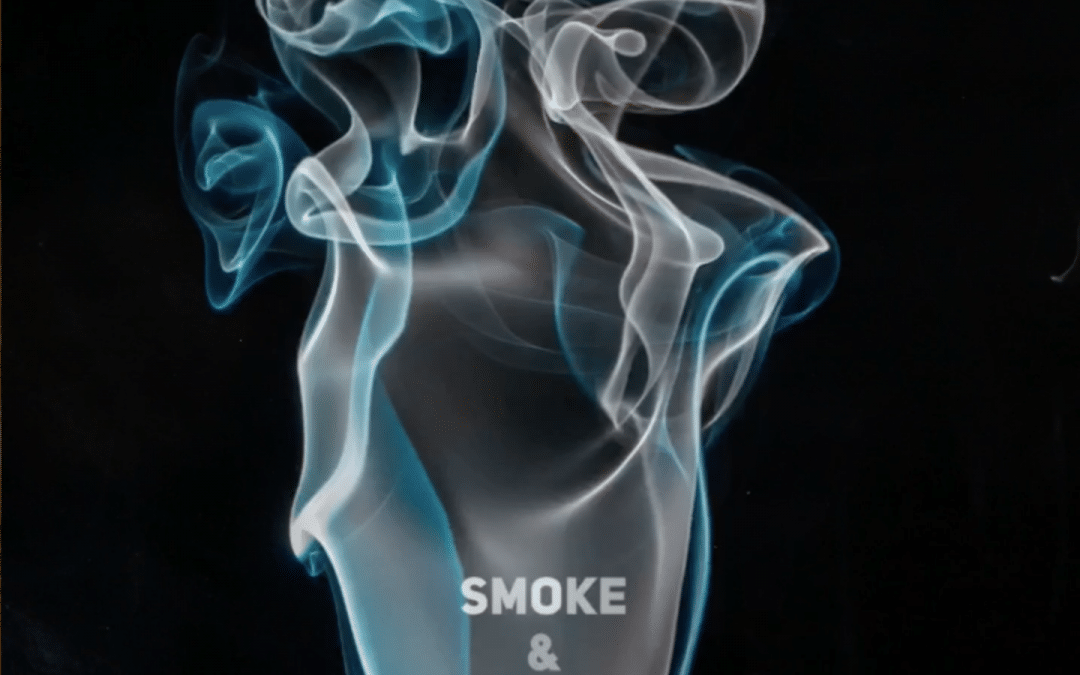
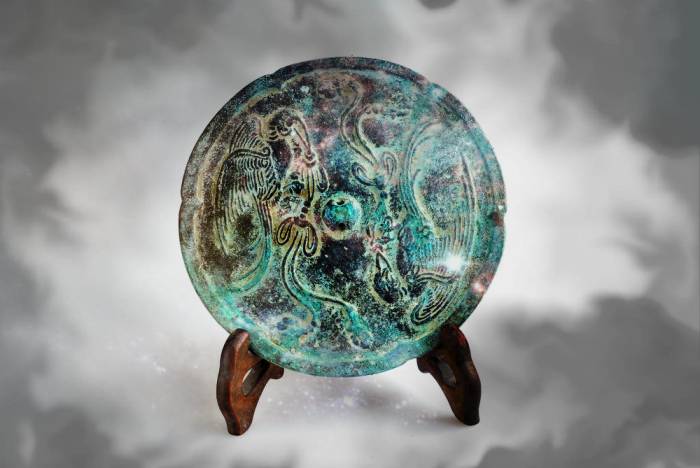
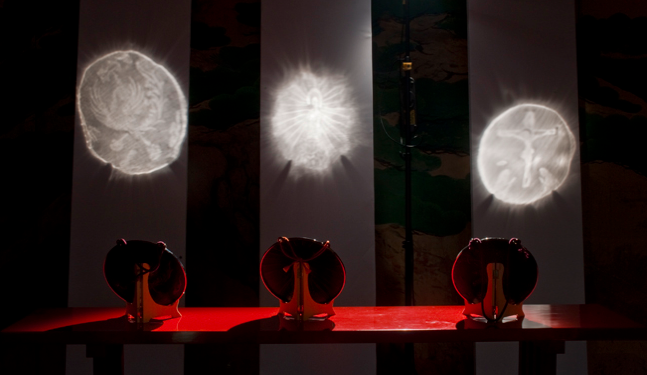





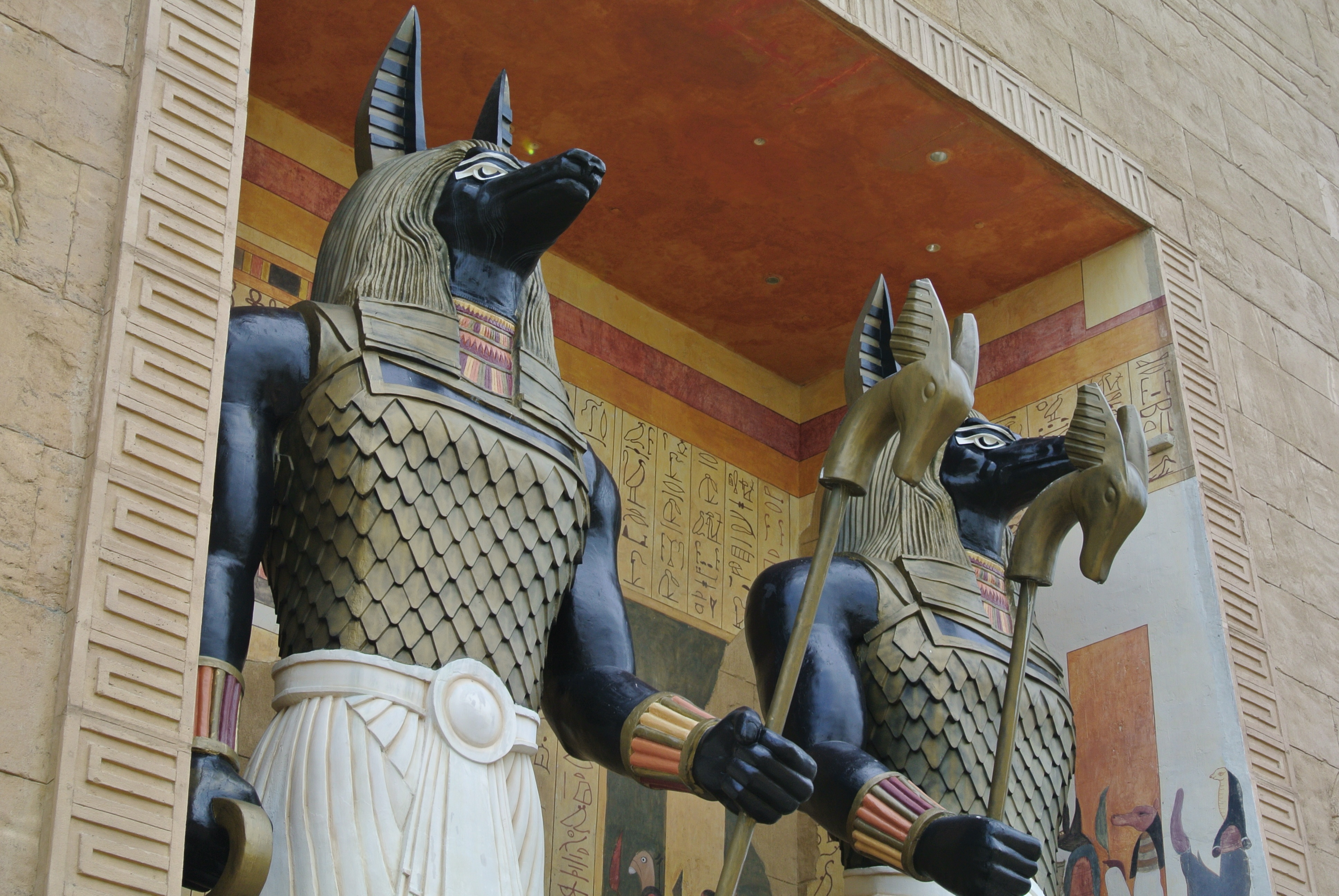

 The pictures show the front of the church of Santa Maria Novella in Florence and the present pulpit. In this church Giordano da Rivalto, a Dominican friar from Pisa, renowned for his popular preaching, delivered a Lent sermon on 23 February 1305, the wording of which deserves close scrutiny. Celebrating the ingenuity of mankind, he stated (in translation):
The pictures show the front of the church of Santa Maria Novella in Florence and the present pulpit. In this church Giordano da Rivalto, a Dominican friar from Pisa, renowned for his popular preaching, delivered a Lent sermon on 23 February 1305, the wording of which deserves close scrutiny. Celebrating the ingenuity of mankind, he stated (in translation): 






:max_bytes(150000):strip_icc():format(webp)/Lipperhey_portrait-58b848b05f9b5880809d1797.jpg) By
By 







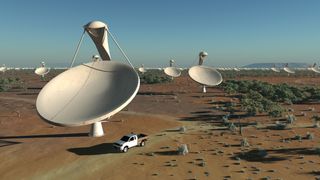

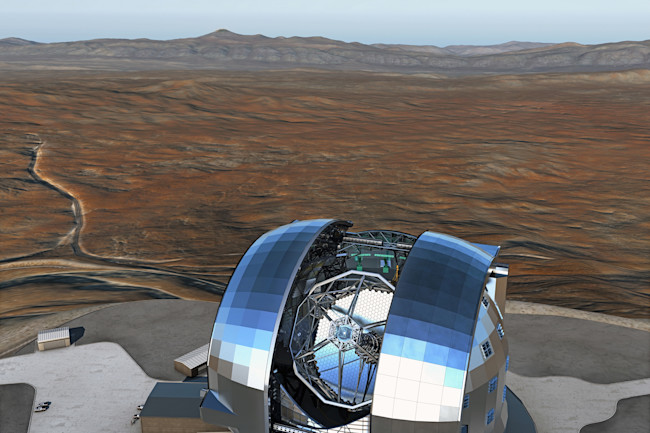


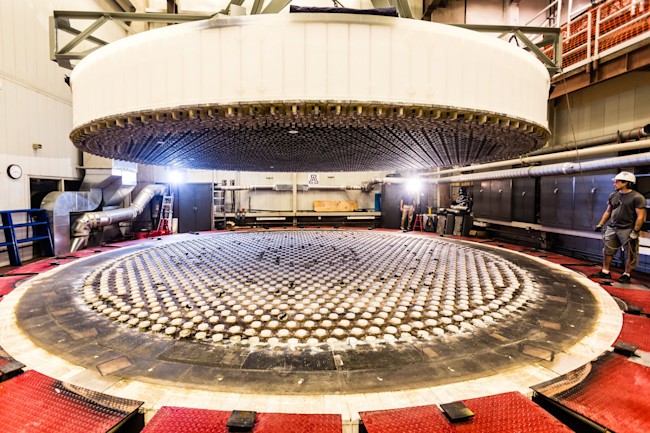
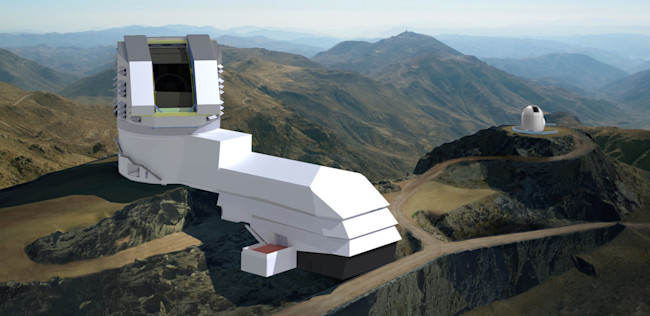
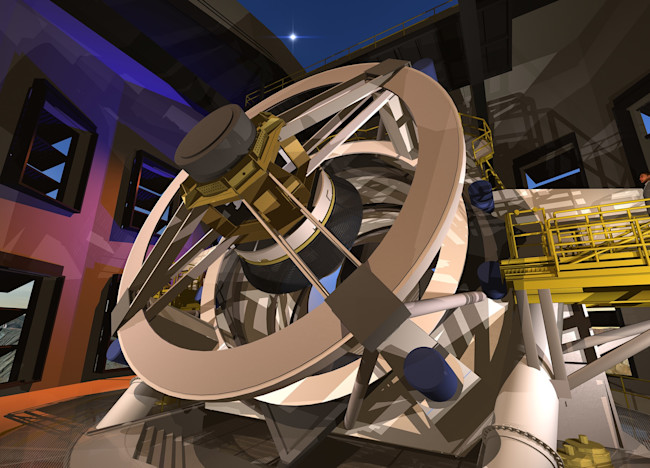
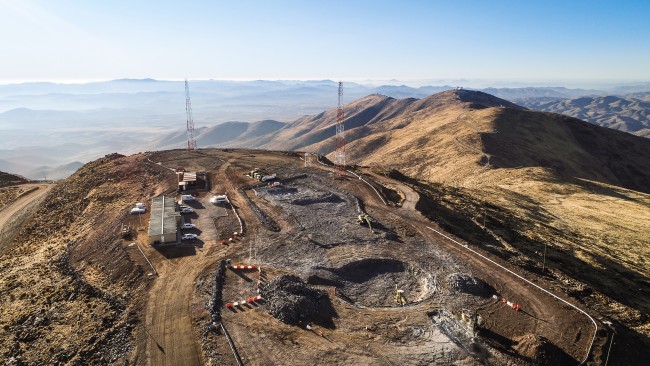
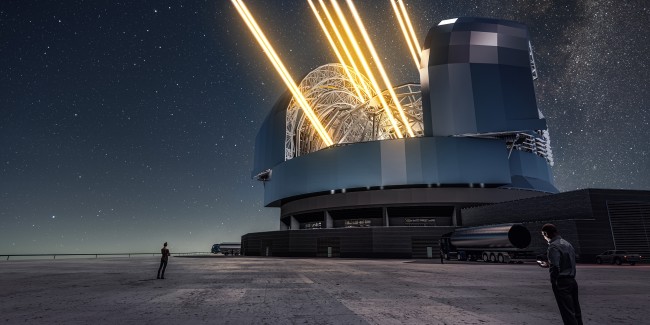







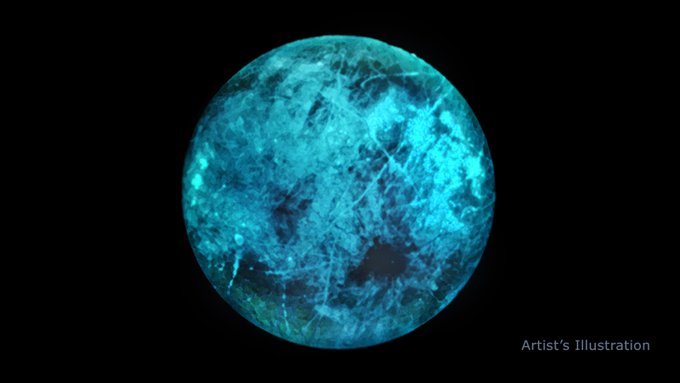



spacer
SPIRITED THINKING SINCE 1888